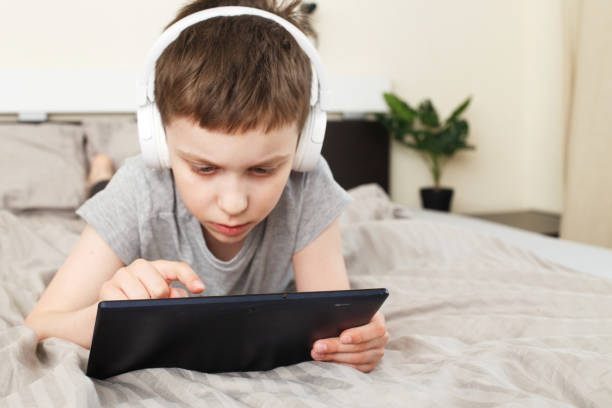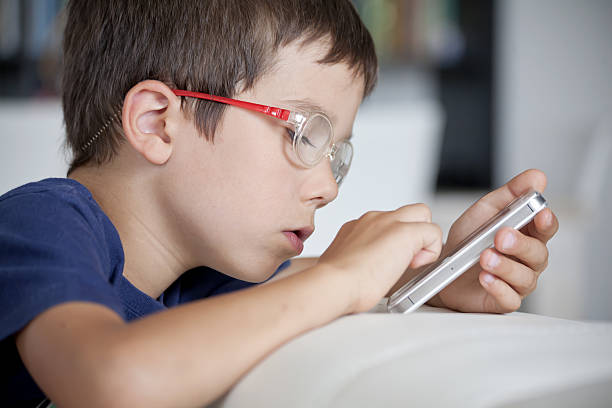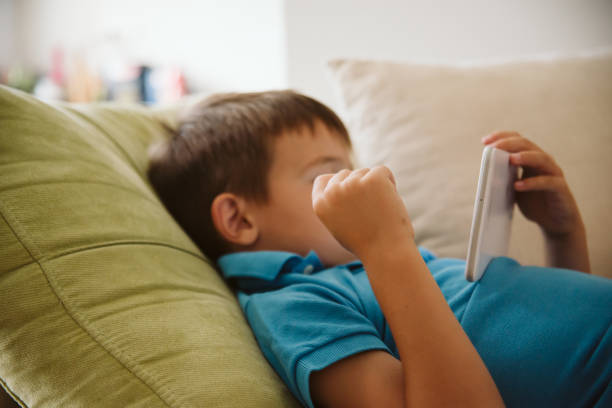In today’s world, screens are everywhere. Kids are spending more time than ever in front of phones, tablets, and computers. While these devices help with learning, entertainment, and communication, they may also have an impact on your child’s eye health. As a parent, it’s important to understand the effects of screen time on your child’s eyes and how you can protect their vision. In this blog post, we’ll cover everything parents need to know about screen time and its effects on kids’ eyes.
The Link Between Screen Time and Eye Health
Spending too much time staring at screens can strain the eyes. This is known as digital eye strain or computer vision syndrome. It’s a group of eye and vision-related problems that occur after long periods of screen use. Symptoms can include dry eyes, blurry vision, headaches, and even neck and shoulder pain. Kids are especially vulnerable because their eyes are still developing, and they might not notice or communicate symptoms until the strain becomes more severe.
How Does Screen Time Affect Kids’ Eyes?

1. Digital Eye Strain When kids spend too much time on screens, they tend to blink less often. This can lead to dry eyes, which are uncomfortable and can affect their vision. Digital eye strain doesn’t only cause dryness, but also leads to blurred vision, headaches, and discomfort around the eyes.
2. Risk of Myopia (Nearsightedness) Studies have shown that children who spend a lot of time indoors and looking at screens may have a higher risk of developing myopia, or nearsightedness. This condition causes distant objects to appear blurry. Myopia has been on the rise in recent years, and some experts believe that too much screen time may be contributing to this trend.
3. Blue Light Exposure Screens emit blue light, which has been linked to digital eye strain and sleep disruptions. While there isn’t enough evidence to prove that blue light causes permanent damage to the eyes, prolonged exposure can lead to fatigue and discomfort. Blue light also affects melatonin production, which can interfere with your child’s sleep, especially if they use screens before bed.
How Much Screen Time is Too Much for Kids?
The American Academy of Pediatrics (AAP) recommends that children aged 2 to 5 should have no more than one hour of screen time per day, while children aged 6 and older should have consistent limits on screen time. It’s important to set these limits to avoid overuse, which can lead to negative effects on your child’s eye health.
Keep in mind that screen time doesn’t just include TV or computer time. It also includes time spent on smartphones, tablets, and gaming devices. You can help your child by encouraging more outdoor activities, such as playing outside or reading books, to balance their screen time.
Tips to Protect Kids’ Eyes from Screen Time Damage

If your child spends a lot of time in front of screens, there are simple steps you can take to protect their eyes:
1. Follow the 20-20-20 Rule One of the easiest ways to reduce eye strain is to follow the 20-20-20 rule. Every 20 minutes, encourage your child to look at something 20 feet away for at least 20 seconds. This simple exercise helps their eyes relax and recover from the strain of focusing on close-up screens.
2. Ensure Proper Lighting Proper lighting is key to preventing digital eye strain. Make sure your child’s screen is well-lit, but not too bright. Avoid having bright lights directly behind the screen, as this can create glare, making it harder to see clearly. A soft, ambient light works best to reduce the contrast between the screen and the surrounding space.
3. Encourage Blink Breaks Remind your child to blink frequently while using screens. Blinking helps moisten the eyes and prevent dryness. You can set a timer every 15 minutes as a reminder to blink or take a short break.
4. Adjust Screen Settings Many devices have settings that can help reduce eye strain. You can adjust the brightness, contrast, and color temperature of screens to make them more comfortable for your child’s eyes. Some devices also have “night mode” features that reduce blue light exposure, which can be helpful in the evening hours.
5. Create a Screen-Free Zone Before Bed Encourage your child to turn off screens at least one hour before bedtime. This helps them wind down without the disruption of blue light. Instead of using screens to relax, suggest other activities like reading a book or playing a quiet game.
6. Schedule Regular Eye Exams Even if your child isn’t complaining about their eyes, it’s important to schedule regular eye exams. A pediatric eye doctor can check for early signs of eye strain, myopia, or other vision problems. Early detection can help prevent long-term issues.
Signs of Eye Strain to Watch For

Keep an eye out for signs that your child may be experiencing digital eye strain or other vision problems. These signs include:
- Complaints of sore, itchy, or dry eyes
- Blurry vision, especially when looking at things at a distance
- Frequent headaches
- Difficulty focusing or concentrating on tasks
- Rubbing their eyes often
- Tilting their head or squinting when using screens
If your child is showing any of these symptoms, it’s a good idea to reduce their screen time and consult with an eye care professional.
Conclusion
Screen time is a reality of modern life, but it’s important to manage it to protect your child’s eye health. By setting limits on screen time, encouraging breaks, and practicing good eye habits, you can help reduce the risk of digital eye strain and other vision problems. Regular eye exams are also essential in keeping your child’s eyes healthy as they grow. Remember, balance is key, so make sure your child also enjoys plenty of time outdoors and away from screens for optimal eye health and overall well-being.
As a parent, you have the power to set healthy screen time habits for your kids. By being mindful and proactive, you can help ensure their eyes stay safe and their vision remains strong for years to come.

